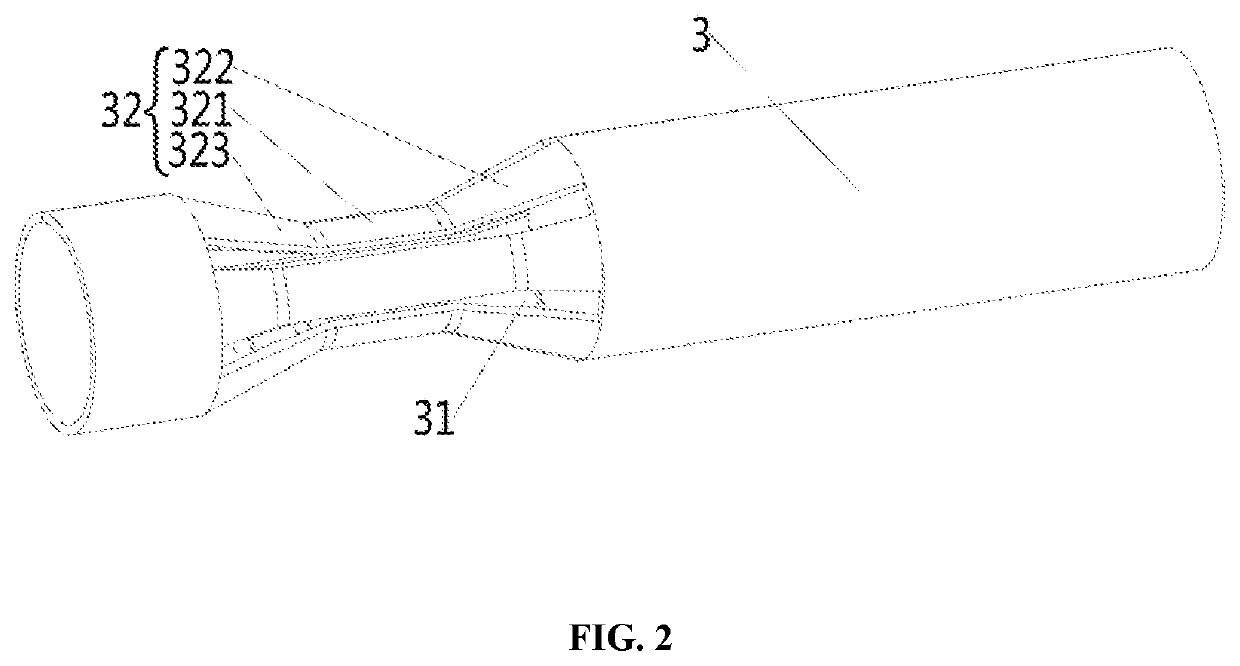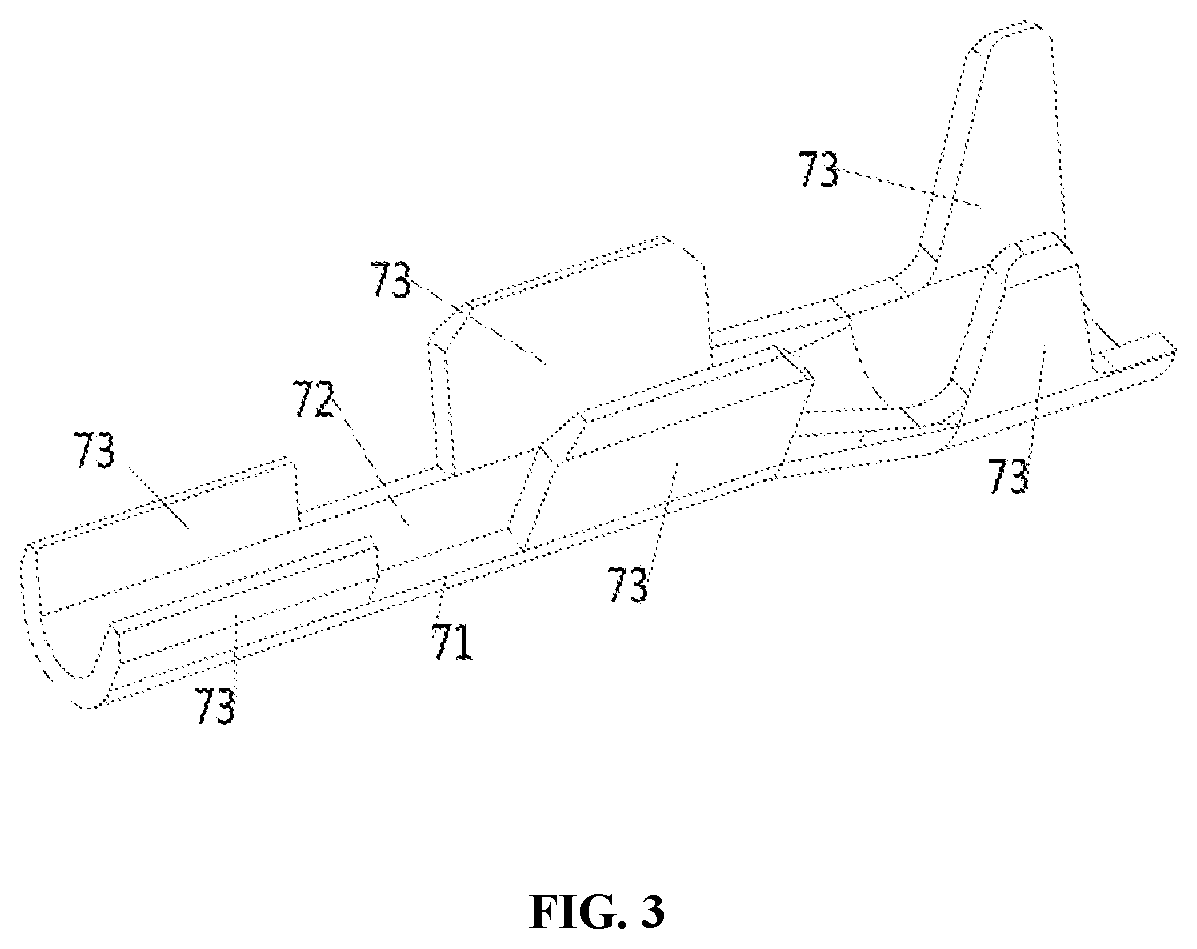Sensor
a technology of sensors and sensors, applied in the field of sensors, can solve the problems of poor vibration reduction capability of existing sensor systems, and achieve the effects of ensuring the reliability of detecting elements and sensors, and reducing the vibration displacement of detecting elements
- Summary
- Abstract
- Description
- Claims
- Application Information
AI Technical Summary
Benefits of technology
Problems solved by technology
Method used
Image
Examples
embodiment 1
[0071]This embodiment provides a sensor, as shown in FIG. 1, the sensor comprises a housing 1, a cap 12, a detecting element 2, a first cylinder 3, a particle filler (not shown), a transmitting cable 5, a connector 7, a wiring harness component, a flange 8 and a screw nut 9.
[0072]Wherein, the transmitting cable 5 is preferably a mineral insulation cable and comprises a conductive line 52, a metal sheath 51 sleeved outside the conductive line 52, and inorganic insulation material or an inorganic insulation material layer filled inside the metal sheath 51 and surrounding the conductive line 52. The transmitting cable 5 has good high-temperature resistance and is able to transmit signal in a high-temperature environment. There are preferably two conductive lines 52.
[0073]The detecting element 2 is preferably a temperature sensing element, and two pins of the temperature sensing element are fixedly connected by welding to two conductive lines 52 at one end of the transmitting cable 5, a...
embodiment 2
[0092]This embodiment provides a sensor, the structure of which differs that of the sensor of Embodiment 1 in that the first cylinder 3 has a different structure, as shown in FIG. 6 and FIG. 7, the first cylinder 3 has a U-shaped symmetrical structure, the hollow part of the U-shaped structure forms a through-hole 31, and the temperature sensing element is inserted in the through-hole 31.
[0093]A portion of the first cylinder 3 right facing the temperature sensing element is recessed inward to form a recessed region 32 which has two symmetrical sides, each side of the recessed region 32 comprises a first segment 321, a first flared segment 322 and a second flared segment 323 that are integrally formed in one piece; the first segment 321 is a straight segment extending along an axial direction of the housing 1, the first flared segment 322 and the second flared segment 323 are respectively connected to both ends of the first segment 321 and extend outward at a certain angle away from ...
embodiment 3
[0096]This embodiment provides a sensor, the structure of which differs from that of the sensor of Embodiment 2 in that the recessed region 32 may only comprise a straight first segment 321 and a first flared segment 322 and / or may only comprise a straight first segment 321 and a second flared segment 323.
[0097]Furthermore, as shown in FIG. 8, FIG. 9 and FIG. 10, herein, the recessed region 32 only comprise a first segment 321 and a first flared segment 322, there is a certain distance from the first flared segment 322 to an inner wall of the housing 1; the first segments 321 at both sides are connected by a curved transition structure, and one end of the first cylinder 3 away from the transmitting cable 5 is likewise provided with a buffering hole 33.
[0098]The housing 1 comprises a contraction section 14 and a sealed section 15. The portion of the housing all the way from a location corresponding to the first segment 321 to its end part at an end away from the transmitting cable 5 ...
PUM
| Property | Measurement | Unit |
|---|---|---|
| elastic deformation | aaaaa | aaaaa |
| elastic | aaaaa | aaaaa |
| heat conductive | aaaaa | aaaaa |
Abstract
Description
Claims
Application Information
 Login to View More
Login to View More - R&D
- Intellectual Property
- Life Sciences
- Materials
- Tech Scout
- Unparalleled Data Quality
- Higher Quality Content
- 60% Fewer Hallucinations
Browse by: Latest US Patents, China's latest patents, Technical Efficacy Thesaurus, Application Domain, Technology Topic, Popular Technical Reports.
© 2025 PatSnap. All rights reserved.Legal|Privacy policy|Modern Slavery Act Transparency Statement|Sitemap|About US| Contact US: help@patsnap.com



